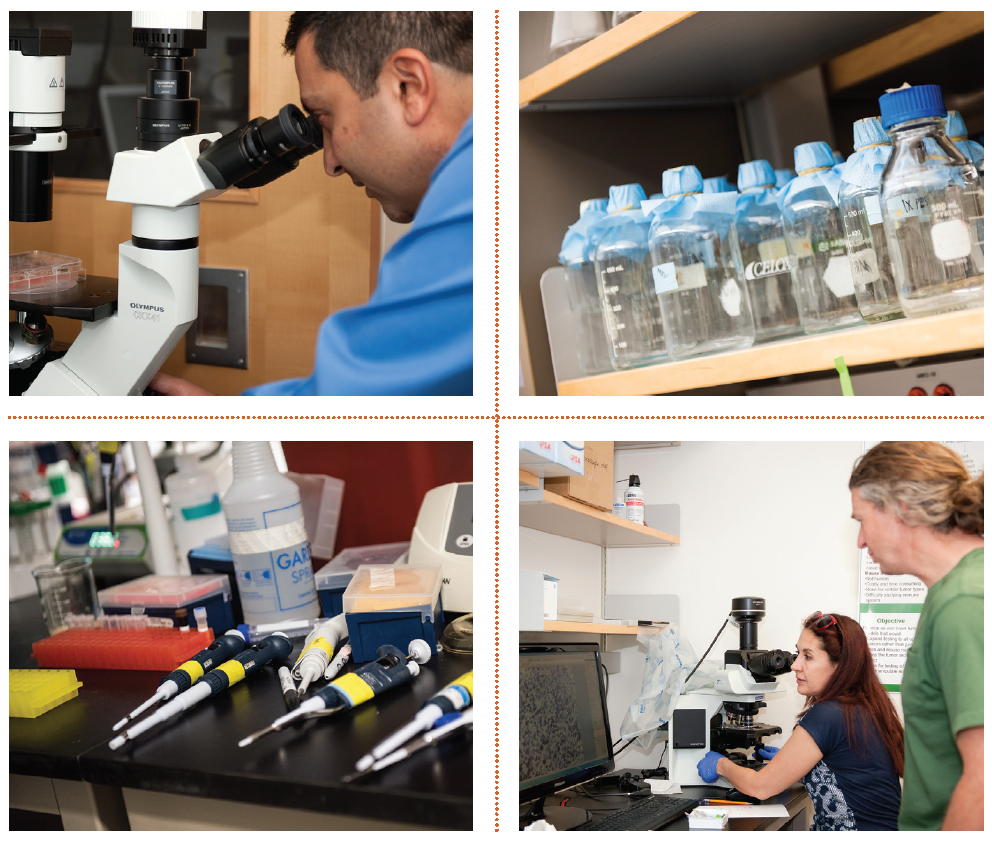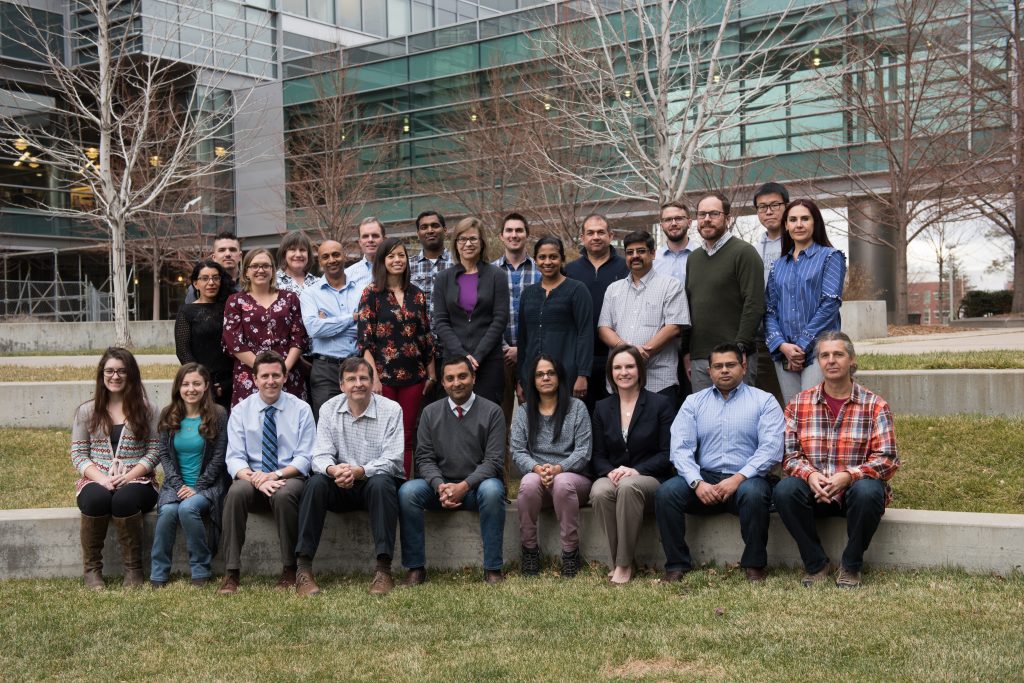There are three traditional treatments for cancer: Surgery, chemotherapy, and radiation. But now a golden age of cancer research driven in part by new technologies and seed grant funding made possible through your support is not only adding new cancer treatments, but entirely new classes of cancer treatments.
One of these new classes is targeted therapies – basically, carefully engineered drugs switch off the faulty genes that cause cancer. Take chronic myeloid leukemia (CML). In 1959, researchers in Philadelphia found that when a bit of chromosome 9 was mashed together with a bit of chromosome 22, the resulting “fusion” gene caused CML (they called this gene, creatively, the “Philadelphia” chromosome). In 2001, the FDA approved the drug Gleevec to turn off the Philadelphia chromosome, effectively curing CML.
Doctors and researchers spent the 2000s searching for similar genetic needles in the haystack of the cancer genome. However, it turns out that instead of one genetic “needle” creating cancer, more often, there are hundreds of genetic variants in any single cancer. The problem was not necessarily finding a needle in the haystack, it was that the haystack is riddled with needles.
Which of these thousands of genetic changes are essential to a cancer? Which of these genetic changes, when muted, would kill cancer? From a single tumor, you could never know: any change could be chance. That’s why the researchers you support decided to compare haystacks, gathering genetic data from the cancers of all the patients they treat for pediatric brain tumors. They do it with a tool called RNAseq – basically, researchers use very nifty technology to identify all the genes that the cancer is actively manufacturing.
“Conceptually, the whole idea of RNAseq is to try to understand quite literally which genes are on or off at any given time in a tumor, allowing us to see what is the processing machinery within a cancer cell,” says Rajeev Vibhakar, MD, PhD, professor of pediatrics at the CU School of Medicine, pediatric brain tumor specialist at Children’s Hospital Colorado, and head of the Morgan Adams Foundation Pediatric Brain Tumor Research Program. In fact, not only does your support allow CHCO to offer RNAseq to every young brain cancer patient who walks in the door, but the hospital also offers the service to patients at other centers in the region.
The first benefit may be to the patient: If a doctor finds a known cancer-causing change in a patient’s brain tumor, the doctor may be able to match that patient with a targeted treatment to mute that cancer-causing gene. For example, if a patient’s tumor shows changes in the genes mTOR, BRAF, IDH1, or MGMT, there are available FDA-approved drugs that may slow or even reverse tumor growth.
“Our work has even found new genetic targets, for example fusions in genes like ALK and NTRK that are known causes of adult lung cancer, but have been cropping up more in our work with pediatric brain cancer. Those patients can be pulled out and put on what are called basket trials – if you have the genetic alteration, you can go on a trial of a therapy targeting that alteration,” says Andrew Donson, BSc, senior research associate in the MAF Pediatric Brain Tumor Research Program.
These trials have helped save lives.
“We have examples of kids who have come in and gotten RNAseq that showed a type of tumor that responds to a particular type of therapy. It’s allowed us to give them effective treatment,” Donson says.
The second benefit of being able to sequence pediatric brain cancers is to future patients. Think about it this way: Say a single tumor has an odd change in the gene ABCDE. That might not mean much. But if 30 percent of 300 pediatric brain tumors have mutated ABCDE (and additional research shows a suspicious function for that gene), then all of a sudden you have a likely target and a therapeutic potential.
“We’re learning the biology, understanding so much more than we ever did, and knowledge is going to get us the power to make those treatment breakthroughs,” Donson says.
Thanks to previous funding support you’ve enabled, the research group at Children’s Colorado now has the largest collection of pediatric brain tumors in the United States. And early MAF funding has allowed the program to attract additional support, along with top talent.
“The size of our research program is a direct result of the money Morgan Adams put into it,” Donson says. “We started with three researchers and now it’s three dozen, including six principal investigators whose work has been able to attract funding from the NIH, NCI and Department of Defense. Our work has made us an internationally recognized center for the study and treatment of pediatric brain tumors.”
In the future, the group hopes to add new technologies beyond RNAseq that will allow them to look at their bio-bank of tumor samples in new ways. For example, rather than mixing up a cell’s DNA sequence through mutation or fusion, some cancers adjust the way DNA is folded. If a gene is hidden inside a fold, it may not be expressed; if a gene is exposed, it may be over-expressed.
“It’s a really special project, unifying the clinical side, surgery, patient care, and research in a nice way,” Vibhakar says. “And fundamentally, the project wouldn’t exist without Morgan Adams funding.”

The Morgan Adams Foundation Pediatric Brain Tumor Research Program
at the University of Colorado Anschutz Medical Campus / Children’s Hospital Colorado

